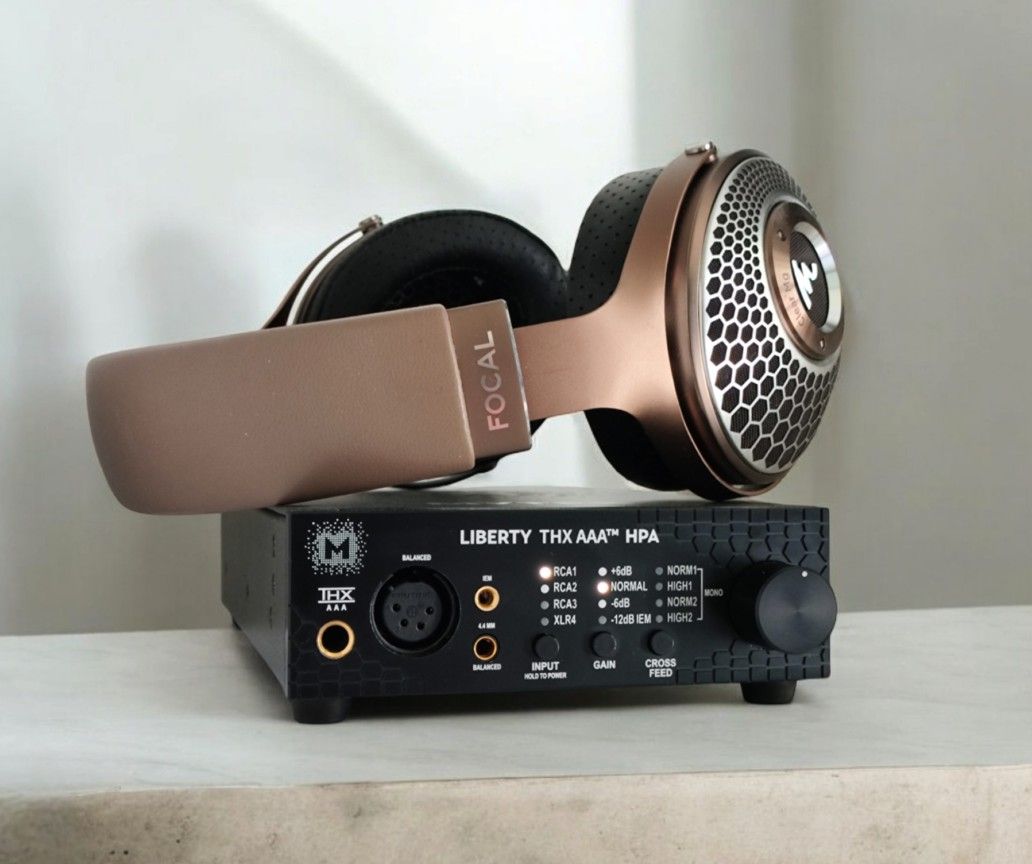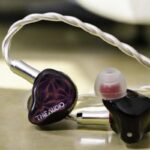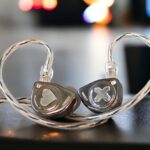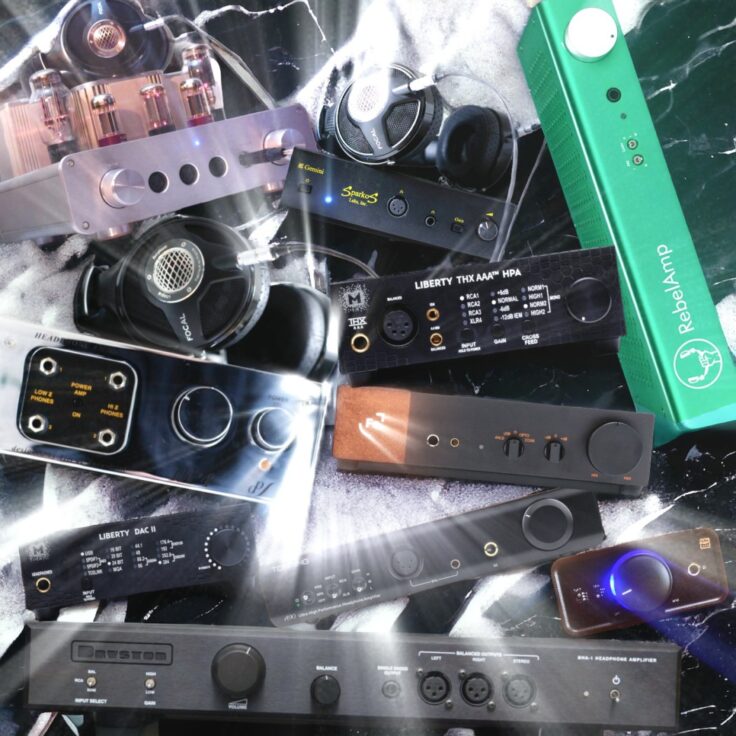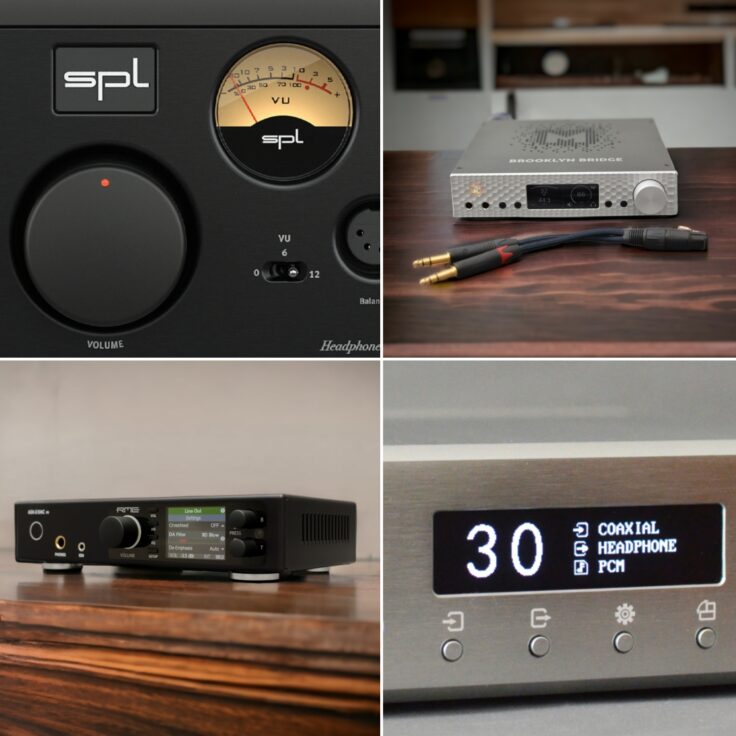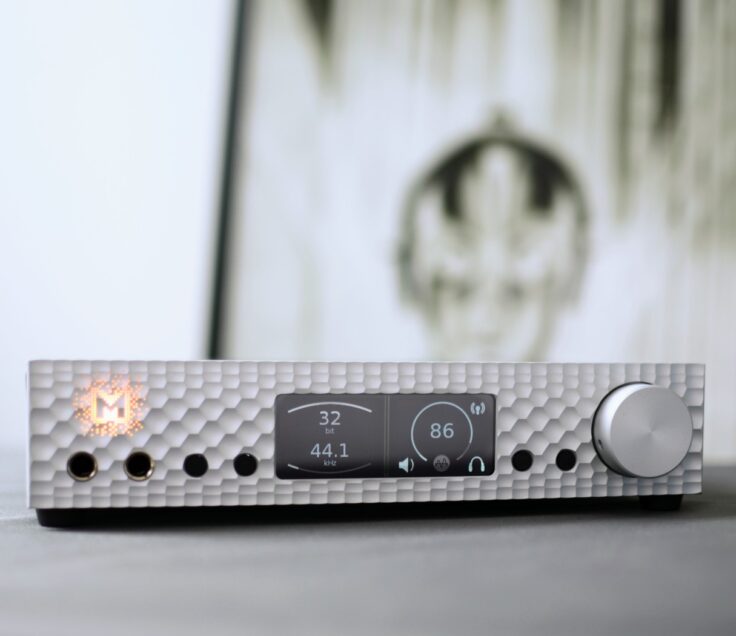The Mytek Liberty Headphone Amplifier is a compact yet powerful device, delivering clean sound with a wide range of input and output options. It is a THX-licensed design and has implemented the THX 888 AAA circuit. THX refers to it as the “World’s Most Linear Amplifier Technology”. The THX AAA amps use a feed-forward error correction topology that removes common distortion issues. To put it simply, signal errors are measured in an early stage of the system and then corrected in a later stage. The THX 888 is the most sophisticated iteration of the AAA circuit to date.
More info: thx.com
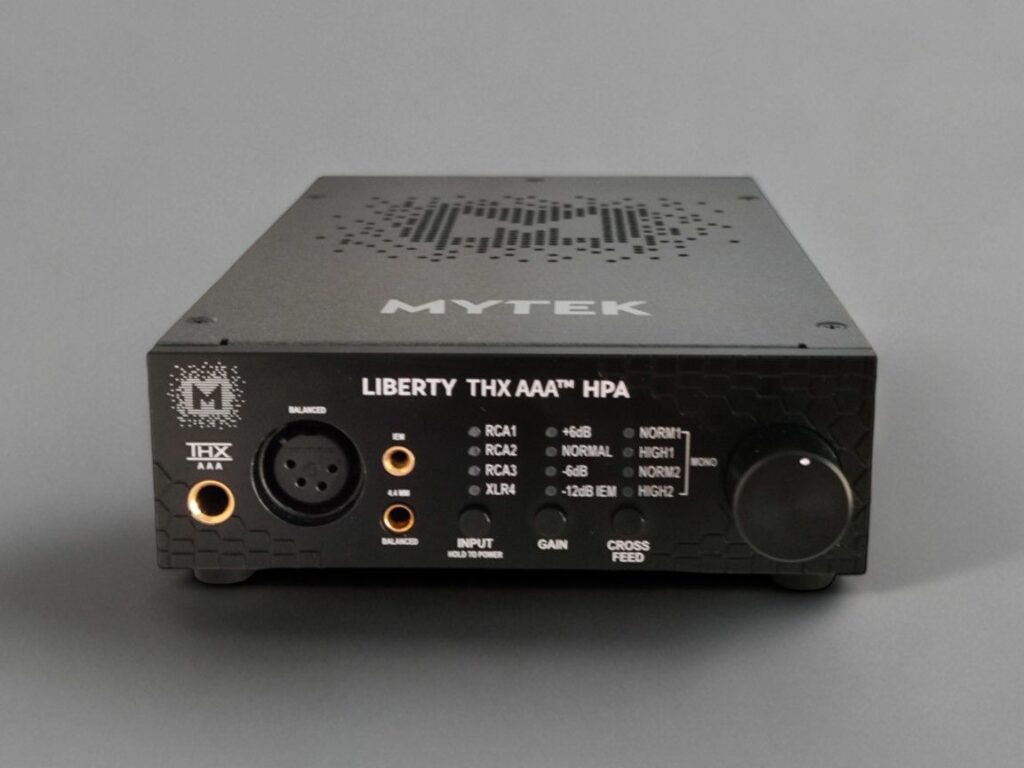
Image Copyright: The Headphoneer
MAIN TAKEAWAY
- Very clean, neutral sound
- Excellent performance with as good as all headphones tested
- Impressive connectivity and functionality
- Compact and well built
- Crossfeed and mono functionality
- Background hiss is a problem with very sensitive headphones and most IEMs
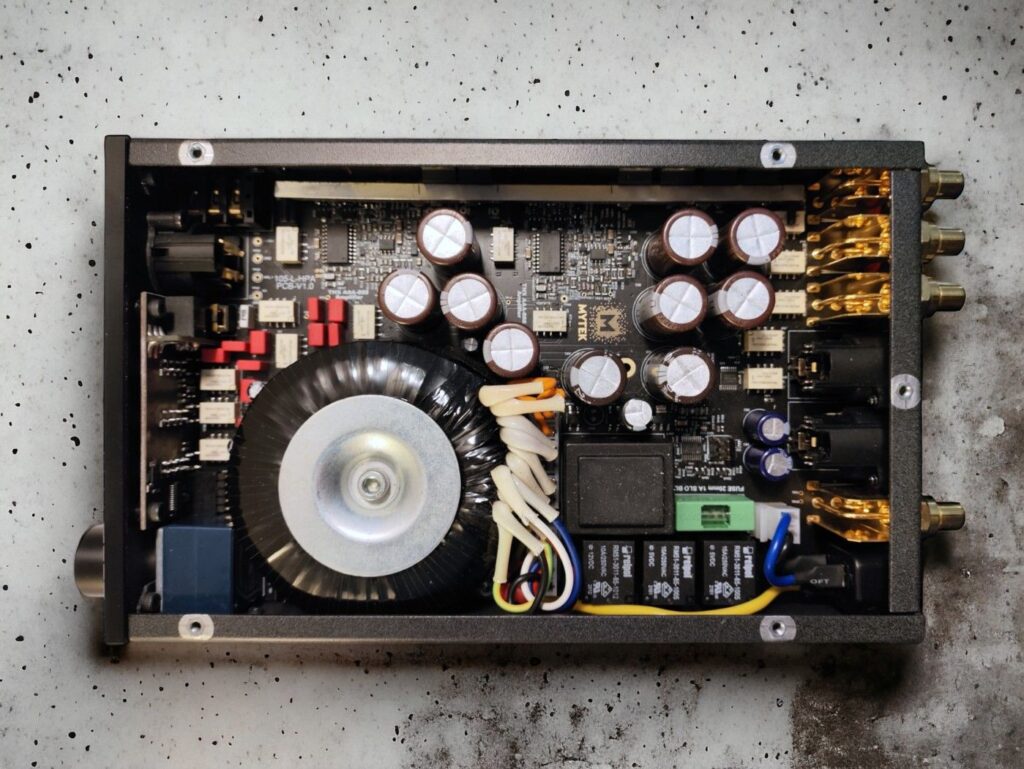
Image Copyright: The Headphoneer
MYTEK LIBERTY SPECIFICATIONS
- THX AAA 888 error correction technology
- Max Power Output: 6W
- THD: min -150dB
- SNR: 147 dB (A weighted)
- Headphone output: 4 pin XLR, 4.4mm, 6.35mm and 3.5mm jack (yes, all four)
- 3 pairs RCA of inputs and 1 pair balanced XLR/TRS inputs
- RCA preamp outputs
- Gain switchable, 4 steps (-12 dB, -6 dBb, 0 dB, +6 dB)
- Crossfeed: 4 variations + off
- Mono function
- Inputs: 3 x RCA, 1 x Balanced XLR/TRS combo connectors
- Headphone Outputs: XLR 4pin, 4.4mm, 1/4” and 3.5mm
- Preamp Outputs: 1 x RCA
- Volume Control: Premium 27mm analog ALPS attenuator. No remote control option
- Power Supply: 60W linear toroid with automatic voltage switching, Dual Mono Regulators
- Automatic Gain Sensitivity: -12dB for IEM output
- Dimensions: width 14 cm, length 22.5 cm, height 4.4 cm / width 5.5”, length 8.8”, height 1.74”
- Weight: 2kg = 4lbs
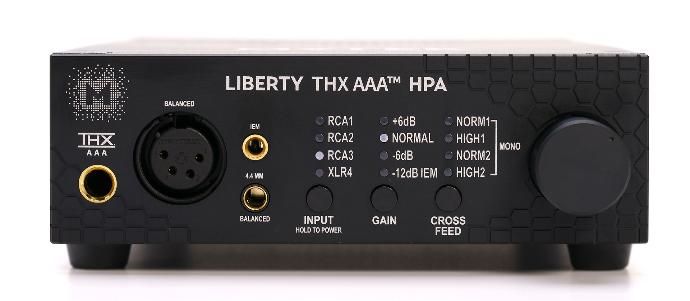
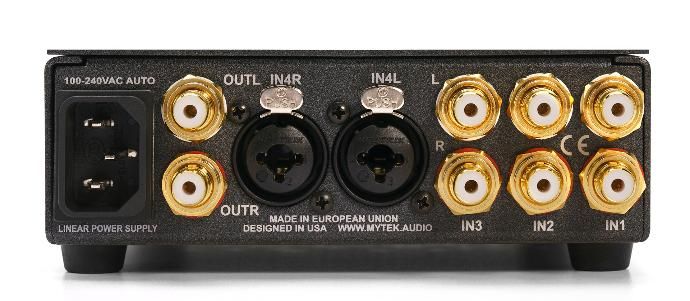
BUILD AND FUNCTIONALITY
The compact form factor of the Liberty Amp is one of its main attributes. In a ⅓ rack-width (5.5”/14 cm), only 8.8”/22 cm deep and just 1.74″/4.4 cm tall, Mytek has managed to squeeze a massive choice of connections and functions, a powerful amp, and a large toroidal transformer. It has the same form factor as the Liberty DAC II, which makes them a very nice stack.
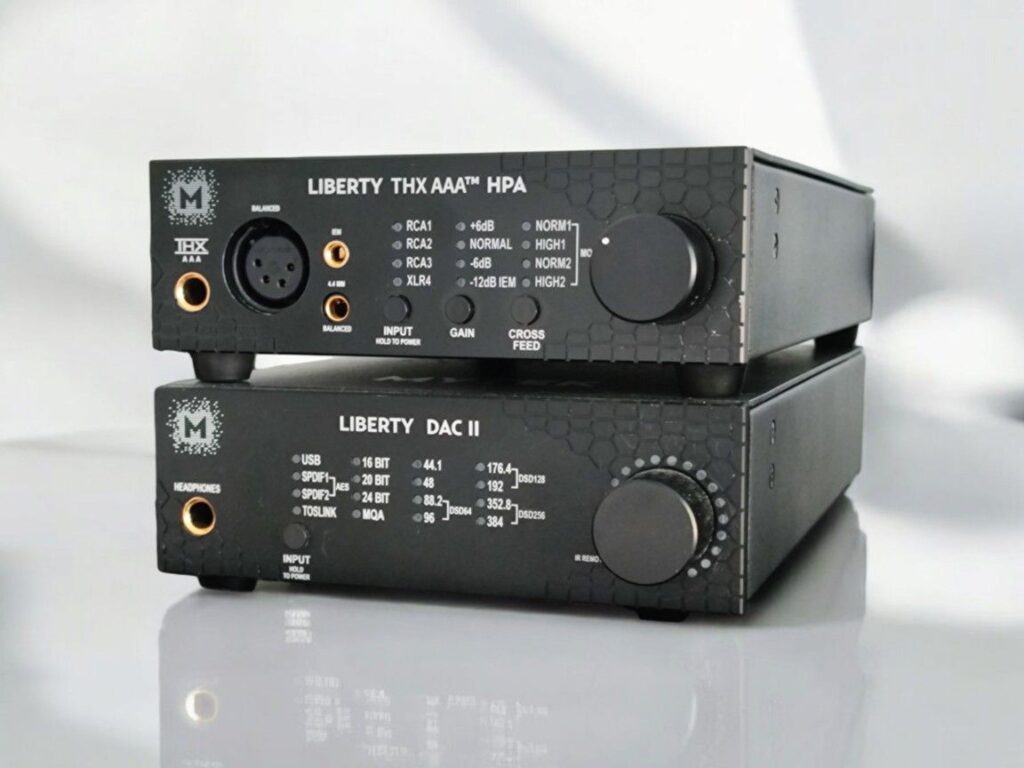
Image Copyright: The Headphoneer
One of my favourite parts of the Liberty Amp is that on the front there are all 4 types of the most commonly used headphone outputs: 4-pin XLR balanced, 4.4mm balanced jack, 6.35mm and 3.5mm. No need for adapters or new cables. Everything fits. This alone is a huge selling point for people with multiple headphones, and it might save you a small fortune in adapters, not to mention that it is a lot more practical and definitely looks better.
The 3.5mm output is labeled IEM because when plugging something in to the 3.5mm port, it automatically sets the gain selection to minimum. You can, however, adjust the gain like you want after you’ve plugged in. Other than that, the IEM port is the same as the 6.35mm, with the same noise floor.
There are three buttons with accompanying led light indicator rows:
- Input/power button: Long press to turn on or off, press to rotate the four inputs or auto select.
- Gain: Press to rotate the four gain settings (-12, -6, 0, and +6).
- Crossfeed: Press to rotate between normal stereo, mono and the four crossfeed settings (normal 1, high 1, normal 2, and high 2).
On the back there are 1 pair of balanced TRS/XLR combo connectors and 3 pairs of unbalanced RCA inputs. There’s also a pair of RCA preamp outputs, along with a standard IEC AC plug for the power cord.
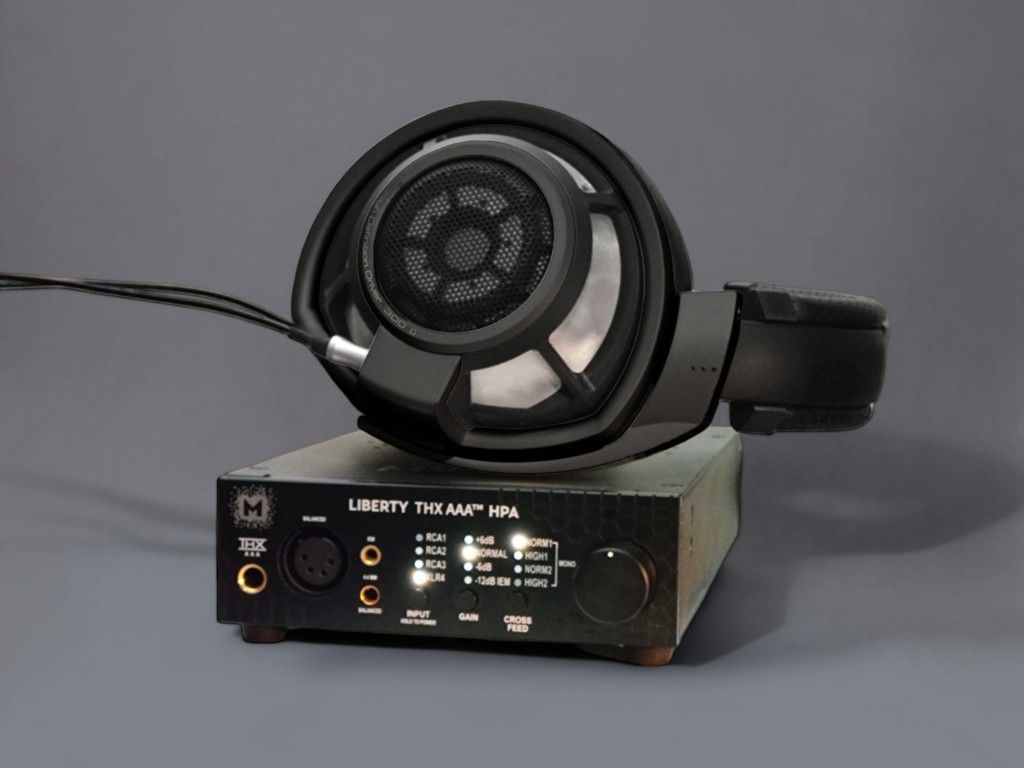
Image Copyright: The Headphoneer
PREAMP AND CROSSFEED
I didn’t spend much time testing the preamp capabilities, but from what I heard, it sounds good. The crossfeed feature works well and doesn’t significantly degrade sound quality. Personally, I avoid using crossfeed unless dealing with extreme stereo recordings, common in older tracks. The mono option is useful for professionals, and given Mytek’s roots in pro audio, it’s clear they still prioritize professional needs.
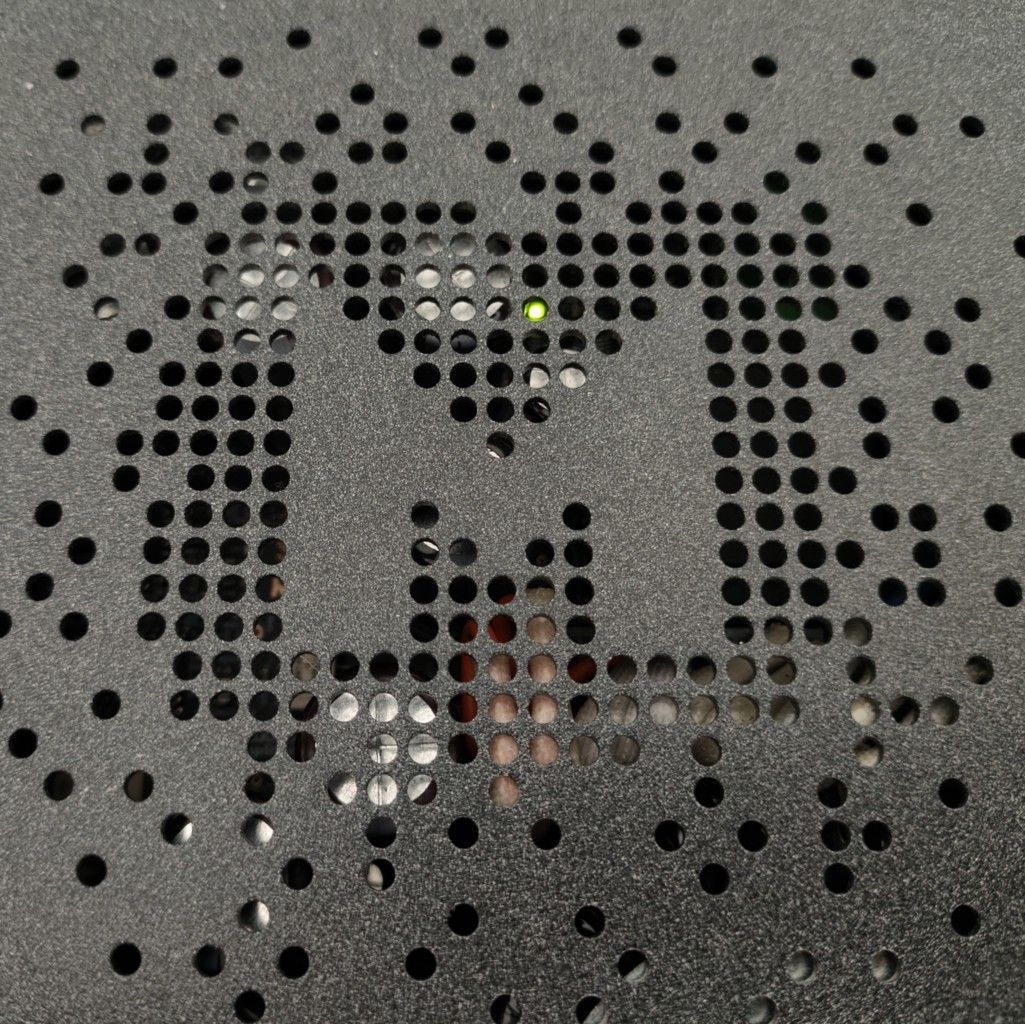
IN-EAR MONITORS
The Liberty Amp has a 3.5mm output labeled “IEM”. However, at least in my setup, there’s a background hiss with many IEMs, even at the lowest gain setting. The sound is great, but the hiss will, depending on the IEM used, not make it a good choice.
The reasonably priced EW300 (28 Ohms, 122 dB) has a slight but tolerable hiss. The single-driver planar magnetic Letshuoer S08 (26 Ohms, 105 dB) has an almost inaudible hiss. The Letshuoer Cadenza 4 (15 Ohms, 102 dB) has slightly more hiss, but I find it tolerable. However, the Kiwi Ears Orchestra Lite (18 Ohms, 112 dB) and the Penon 10th (9 Ohms, 110 dB) become too noisy to be usable. The Letshuoer S12 PRO (16 ohms, 102 dB), on the other hand, is almost completely silent and sounds very good.
Needless to say, I’m pretty disappointed with the noise floor of the Liberty Amp, especially since it’s got an IEM-labelled output. However, it seems like low sensitivity and/or higher impedance IEMs might work well.
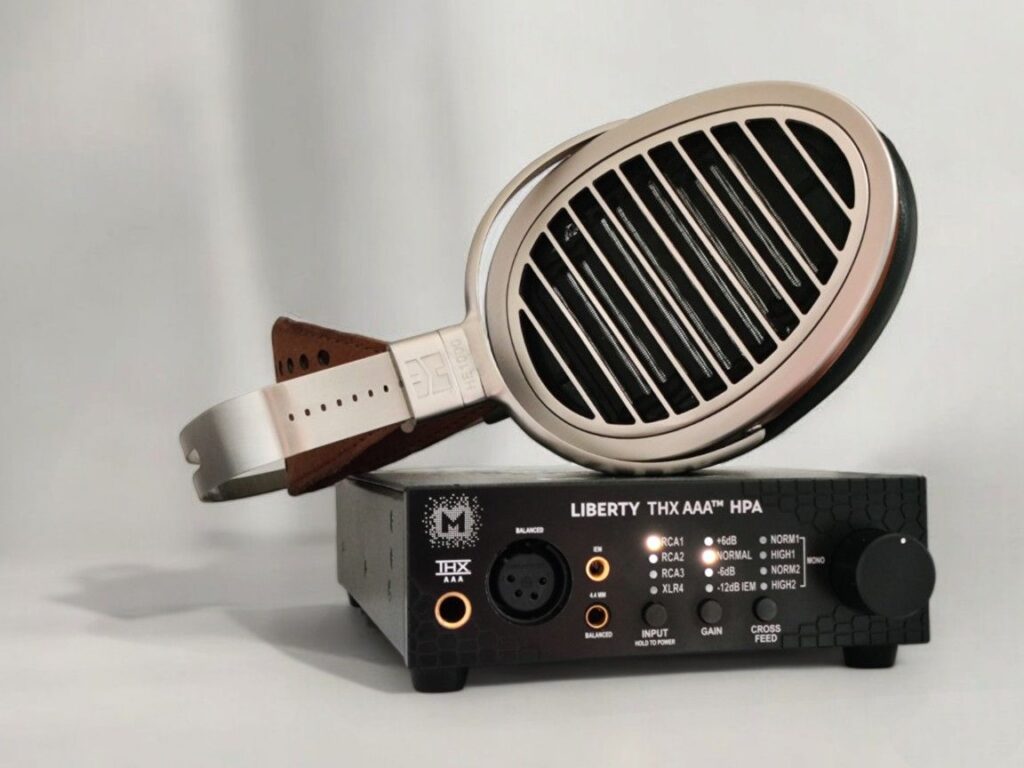
Image Copyright: The Headphoneer
HEADPHONES – LISTENING IMPRESSIONS
In the following, I will test a wide range of headphones on the Liberty Amp and compare it to other amps I have available. The widely known Topping A90 and the excellent Sparkos Labs Gemini hybrid tube amp will be key references. Other amps include the Schiit Magni Heretic, the lovely green Rebel Amp, as well as some more expensive amps that will be mentioned along the way.
HIFIMAN SUNDARA and HE-560
My Sundara has leather pads, while the HE-560 has grill mod and third-party hybrid pads and an Atlas cable. Anyway, both sound terrific with the Liberty Amp. There is a significant increase in dynamics and clarity when I move from the Fiio K5, Schiit Magni Heretic, Topping A90, and Rebel Amp to the Sparkos Gemini and the Mytek Amp. The music is more alive and better articulated. There is more detail, and the background is blacker with both. Comparing the Gemini and the Mytek Liberty THX, there’s a more neutral tone to the Mytek and even more fine detail.
- Buy on Amazon: Hifiman Sundara
HIFIMAN HE1000v2 and EDITION XS
I have tried a range of amplifiers with the HE1000v2 over the years. It certainly needs some power to shine, and it isn’t the easiest headphone to match perfectly. When you get the right combo, however, it’s a fabulous experience.
The Mytek Liberty THX Amp is an exceptionally clear and tight-sounding amplifier for the HE1000v2. It’s super clean without being bright or clinical. The imaging is probably the best I’ve heard. Truly impressive. The Edition XS is not as demanding of the amplifier as the HE1000v2, but it’s also a great match with the Liberty Amp.
- Buy on Amazon: Hifiman XS
- Buy on Amazon: Hifiman HE1000
HIFIMAN HE-6 SE
It’s always fun to see how an amplifier handles one of the most difficult headphones to drive ever made. The HE-6 SE is rated at 50 ohm/83.5 dB, and many enthusiasts (like myself) often use it with a powerful speaker amplifier.
Unsurprisingly, the Liberty Amp performs adequately and sounds fine, but once you’ve heard the HE-6 SE on a top-tier setup, you realize what you’re missing. It simply can’t drive the beast to its full potential.
SENNHEISER HD600, HD650, HD660S, and HD660S2
I have had the opportunity to test out all the Sennheiser HD6** headphones: HD600, HD650 (which is basically equal to the HD6XX), HD660S, and HD660S2. They all sound wonderful with the Liberty Amp. It sounds better than the already good-sounding Topping A90 and the Rebel Amp. When comparing it to the Sparkos Labs Gemini hybrid tube amp, I find them to be equally good, but with the different strengths. The Gemini is bolder and slightly more dynamic sounding while the Liberty Amp is a little bit more textured sounding.
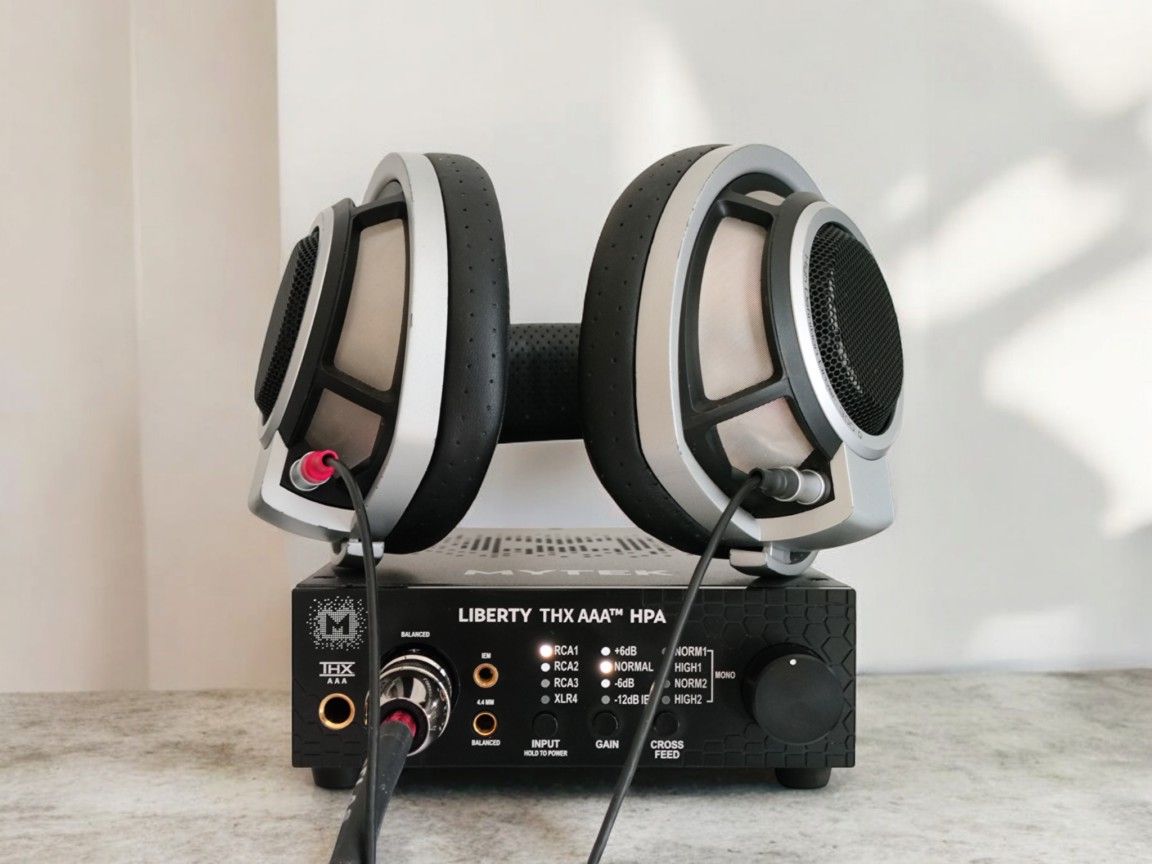
Image Copyright: The Headphoneer
SENNHEISER HD800S and HD800
My top amplifiers for the HD800 and HD800S are the solid-state Bryston BHA-1 and the tube EAR HP4.
The BHA-1 is a very good solid-state amplifier. It’s crisp and tight, with lots of micro details and dynamics. That being said, I tend to find solid-state amplifiers to make both the HD800 and the HD800S sound clinical and a bit thin and bright. The BHA-1 is one of the better solid-state amps I’ve tried with the HD800/S, so there is nothing wrong with the Bryston BHA-1, but rather the fact that I find a good tube amp to sound more pleasing with the HD800S.
When I go from the BHA-1 to the Sparkos Labs Gemini, I find it to be an improvement. The Gemini is more organic, a bit richer, and less edgy. The treble is less fatigue-inducing, the mid-range a bit sweeter, and the bass a tad fuller.
The all tube Woo WA22 has an even richer tonality than the Gemini, but not at the cost of details. Unsurprisingly, the Gemini sounds somewhere between the all-tube WA22 and a high-quality solid-state amp like the Bryston BHA-1. Personally, I find the WA22 to sound the better and more organic, but the Gemini is also stellar. Both do a great job and take the edge off the famous treble peak/bright sound the HD800S and HD800 often have, even with great solid-state amps. I find the Gemini a great middle point.
Comparing the Gemini to the Mytek Liberty Amp, I am surprised by how similar they sound. I expected that the Gemini would be better, but the Liberty is a great solid state alternative, with stellar control and a slightly warm tonality. I have tested most of the Mytek DAC/Amps before, and they all do well with the HD800 and HD800S, so it doesn’t come as a huge surprise that the Liberty does too.
Buy on Amazon: Sennheiser HD800S
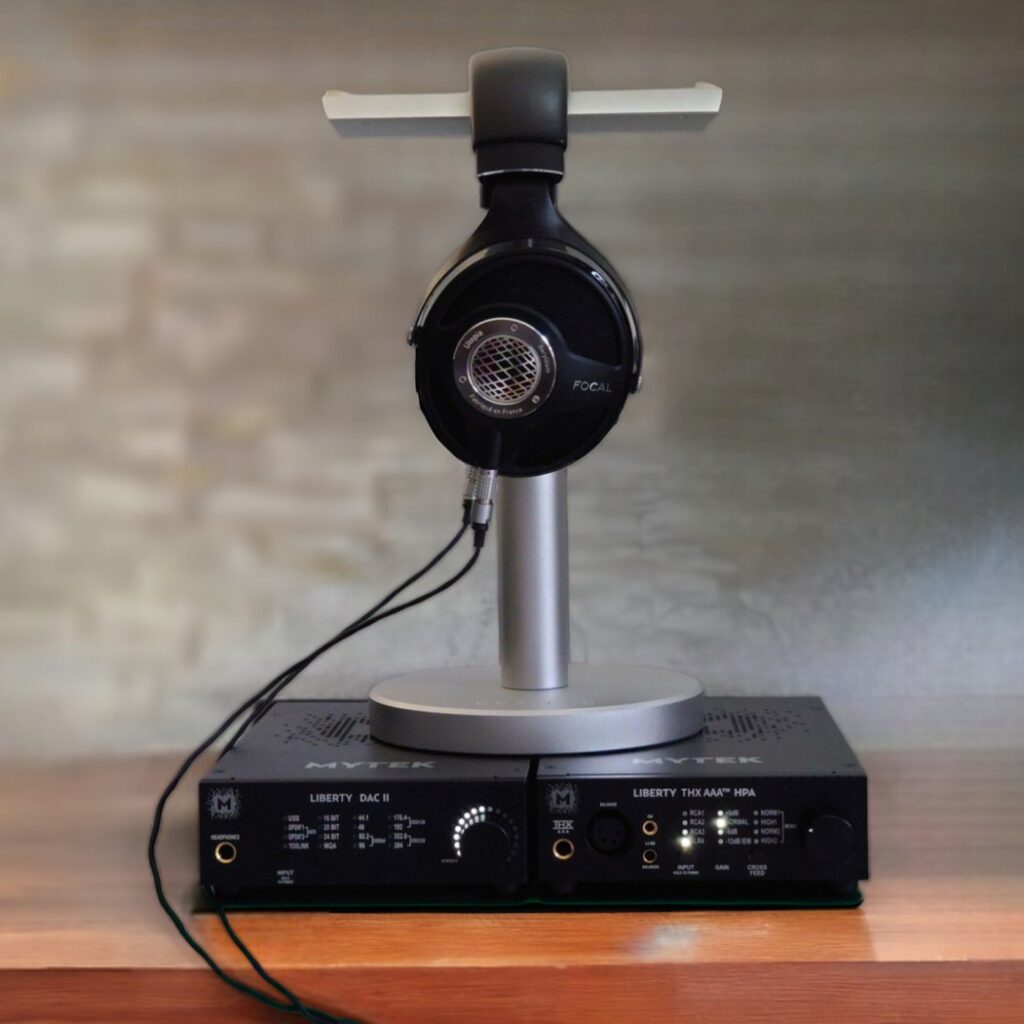
Image Copyright: The Headphoneer
FOCAL UTOPIA
I made a rather large comparison review called “The Best Amp for Focal Utopia”, and the Liberty Amp was my favourite solid state amplifier of the ones I tested. Here’s what I wrote:
This is an extremely dynamic and clean-sounding amplifier. And especially so with the Utopia. It brings out every detail and takes the holographic experience to a new level. The bass is powerful and punchy, and the treble is very clear and clean.
Compared to the Topping A90, it’s even cleaner and even more dynamic. The space between instruments is blacker. The Rebel Amp is closer, but not all there.
With the Mytek, the insane spatial qualities of the Utopia are brought to another level. The bass seems to go even deeper, and it’s delivered with better control. The treble is also super tight. The mid-range is great too, with the same control and incredible detail as the rest of the frequency spectrum.
The Mytek Liberty isn’t bright. It’s not dark. It’s the definition of neutrality. It seems to be a total lack of distortion. It’s never fatiguing. However, it is so clean and transparent that I can understand if people find it too neutral. Other amps tend to add some meat and fullness to the already neutral and clean Utopia. I’m not holding that against the Mytek though; I think this combination is really, really good.
Buy on Amazon: Focal Utopia
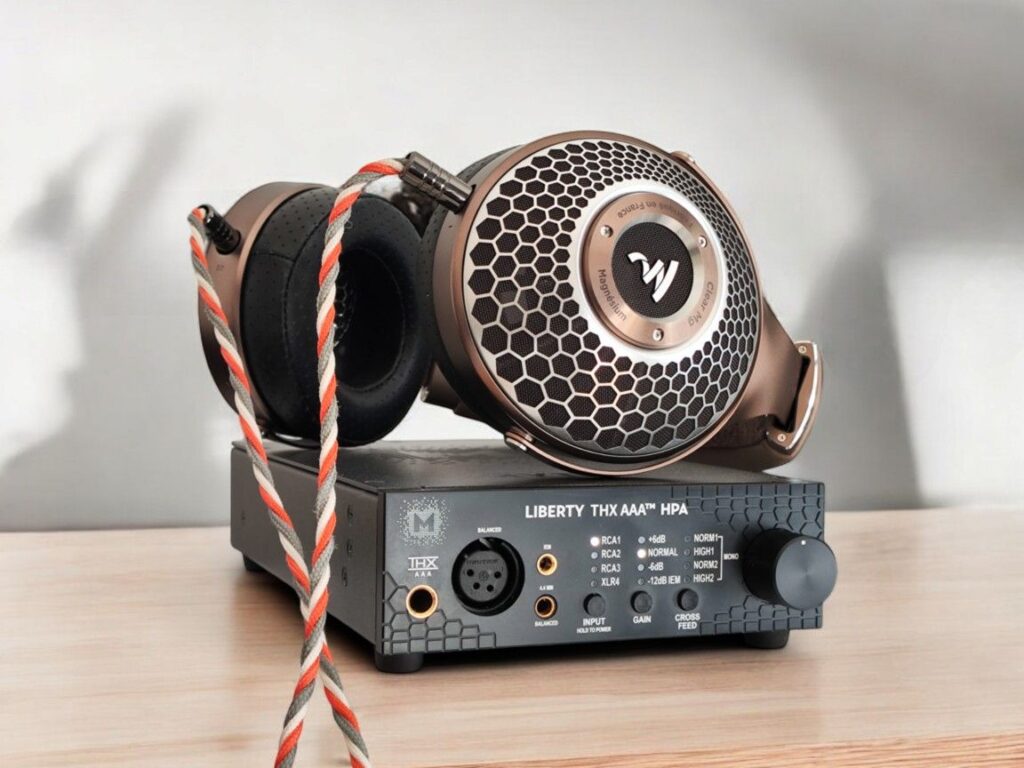
Image Copyright: The Headphoneer
FOCAL CLEAR MG and ELEX/ELEAR
The 55-ohm Clear MG and the 80-ohm Elex/Elear, both 104 dB, are Focals affordable versions of the flagship Utopia.
The Dark Eyes album by Tomasz Stanko Quintet sounds extremely spacious and detailed. The imaging is superb. Comparing them with the Sparkos Labs Gemini across different tracks to the Topping A90 and the Rebel Amp, I think they all do a good job, but the Gemini stands out with a more liquid and slightly thicker sound, while at the same time managing to be more detailed and dynamic.
When I compare the Gemini to the Mytek Liberty Amp, I find they are on the same level in terms of detail retrieval and dynamics, but they have slightly different characteristics that are typically associated with solid-state versus tube amplifiers: the Mytek is tighter and more textured, and the Gemini is warmer and more liquid.
Buy on Amazon: Focal Clear MG
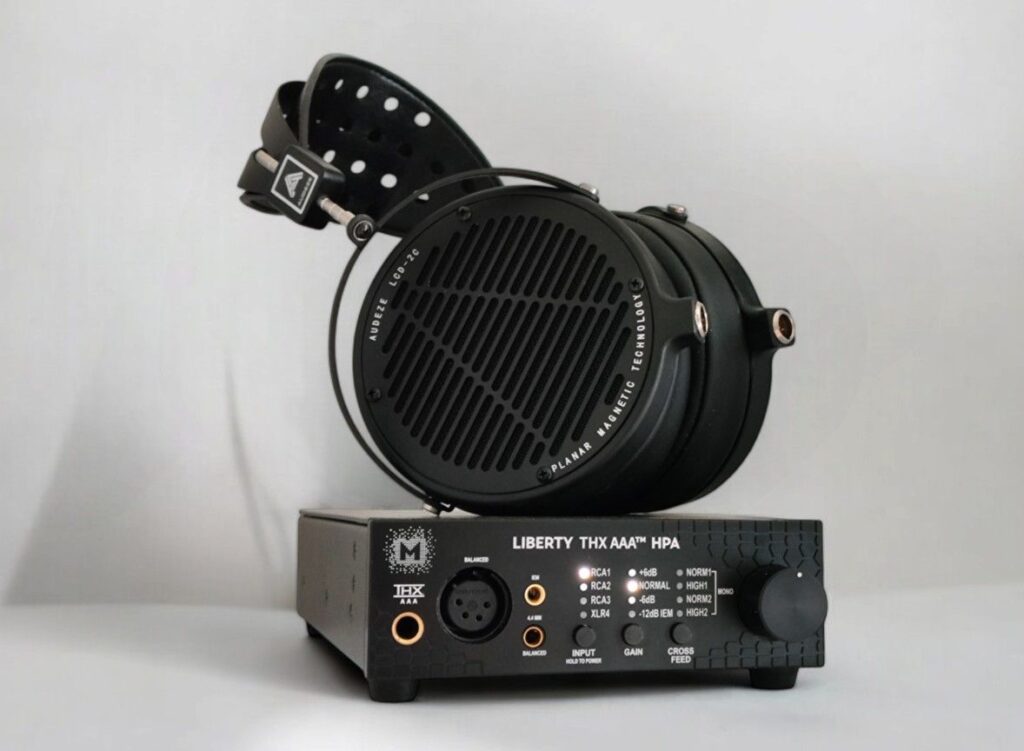
Image Copyright: The Headphoneer
AUDEZE LCD-X and LCD-2 Classic
The LCD-X and LCD-2 Classic sound very nice on the Liberty Amp. It’s detailed, clear, tight, and neutral. However, comparing it to the Topping A90, the Rebel Amp, and the Monolith THX, I cannot say that there’s much difference to write about. They’re all renowned amps, and they all sound very good. Comparing the Liberty Amp to the Sparkos Labs Gemini, I find the tube hybrid Gemini to sound a little bit warmer and more liquid. The midrange is sweeter but has slightly less texture.
Buy on Amazon:
MEZE 109 PRO
The dynamic driver Meze 109 PRO (40-ohm/112dB) is quite sensitive, and I have to adjust the gain down to avoid hiss. Listening to the 109 PRO with the Sparkos Labs Gemini, Topping A90, Rebel Amp, and the Liberty Amp, there are no large variations. These headphones are seemingly pretty flexible with regards to the amplifier, so all four amps do a very good job. Although the Gemini might stand out as my favorite, mainly because of its slightly meatier sound, it is not preferred by a large margin, and definitely a very subjective preference of tonality.
Buy on Amazon: Meze 109 PRO
DENON AH-D9200
The D9200 (24-ohm/106 dB) is Denon’s semi-closed dynamic driver flagship. The Mytek Liberty Amp is really nice with the D9200. The Topping A90 does quite well too, but the Liberty Amp is better.
Comparing it to the Sparkos Gemini, I cannot really say I prefer one over the other. The Mytek has slightly more detail, and the Gemini has a slightly bolder sound. The differences aren’t really big, though, they’re both great.
Buy on Amazon: Denon D9200
DENON AH-D5200
The D5200 (24 ohm/103 dB) is along with the D7200, the D9200’s little brother. It sounds really good with the Liberty—better than the Gemini and the A90. The gain must be at -12dB for me to avoid hiss. The Liberty Amp sounds clean and punchy without sounding clinical.
Buy on Amazon: Denon D5200
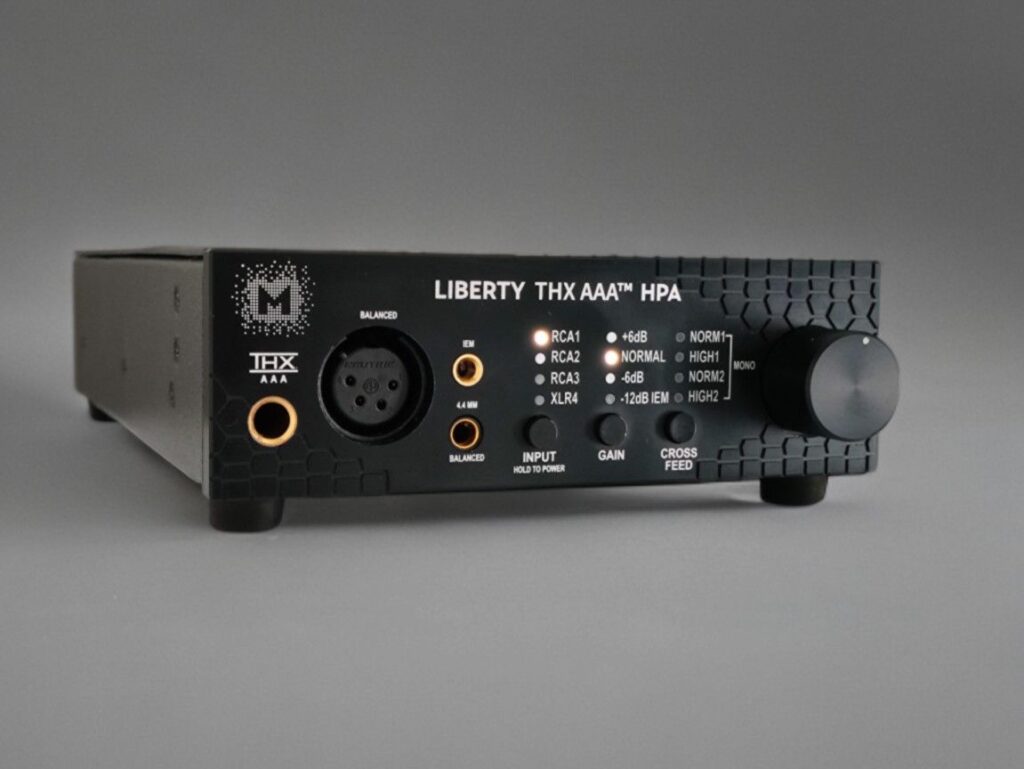
FOSTEX TH900 mk2
The Fostex TH900 (20 ohm/100 dB – mk1 and mk2 are identical except for the cable) has no issue with background noise on low gain. The sound is very clean. If anything, it is slightly clearer sounding than the Topping A90, Rebel Amp. Comparing it to the Sparkos Labs Gemini and the Bryston BHA-1, I find them quite equal, with only the slightest of differences.
Buy on Amazon: Fostex TH900 mk2
GRADO GS1X
Grados aren’t like other headphones. And the RSX1 (38 ohm/99 dB) sure is picky on the amplifier. My Rebel Amp does great; the Topping A90 is quite good. The Mytek Liberty Amp sounds very good too, but I had an issue with a very slight hiss even at -12 dB gain at some point, but it disappeared for some reason. I have no idea why, but I made some changes in my system. Anyway, the Liberty Amp did a good job with the GSX1.
Buy on Amazon: Grado RS1X
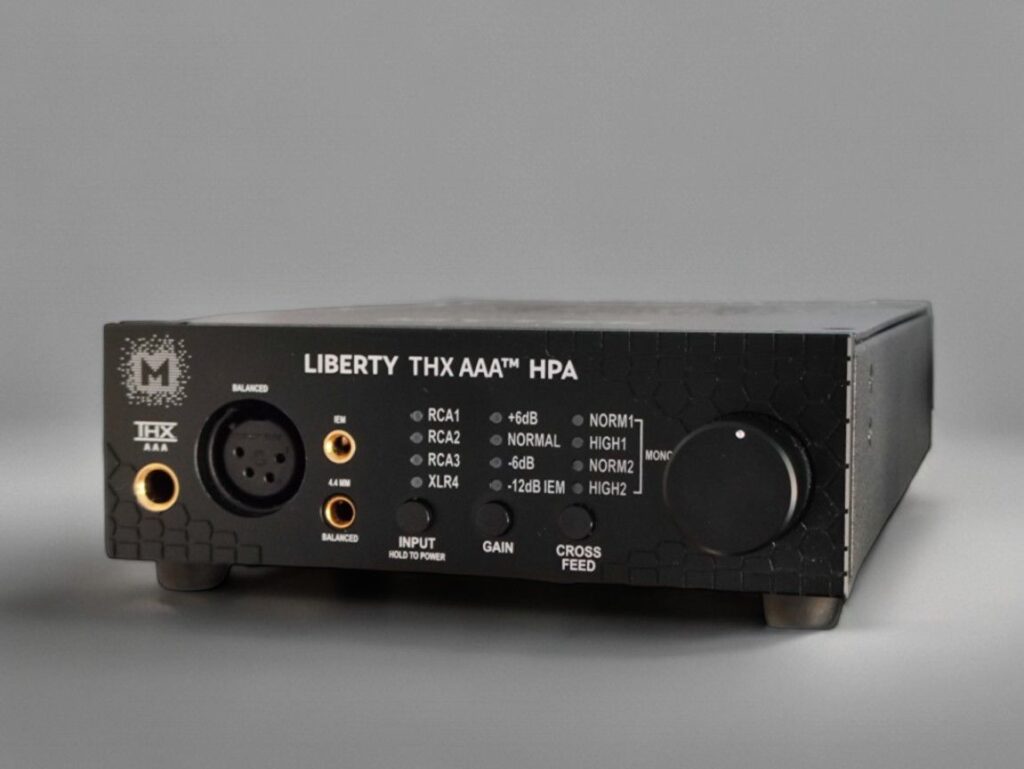
QUAD ERA-1
This is a fabulous-sounding headphone that has not gotten as much attention as I think it deserves. It is a low-impedance, high-sensitivity planar magnetic headphone. Even though it’s specified as 20 ohm/94 dB/mW, it’s one of the few headphones I know that sounds great from my LG V40 phone’s headphone jack.
Playing Magnus af Uggla’s fantastic guitar-based instrumental album Works 4, both the Liberty Amp and the Sparkos Labs Gemini do a great job. Comparing them, the Gemini sounds a little bit bolder, but they have roughly the same amount of detail and dynamics. Moving over to the Topping A90, things still sound marvelous. Tonality-wise, the Topping is the farthest away from the Gemini. It’s not as meaty, but still very good. I think all three amplifiers do a very good job with this quite flexible headphone; the level of detail and technical finesse are similar, and even though there are small differences, they sound more alike than not.
Full Review: QUAD ERA-1
DAN CLARK AUDIO ETHER 2
The 16-ohm/92 dB planar magnetic Ether 2 is a fabulous-sounding headphone that has not gotten the attention it deserves, maybe because it was priced a bit high. I really like the design and build, especially the circular cups, which fit me better than the oval-shaped ones.
The Mytek Liberty Amp sounds very good, but not as organic as the Sparkos Labs Gemini. Both are excellent, highly detailed, and dynamic, with a great, albeit slightly different, tonality.
Comparing them to the Topping A90 and the Rebel Amp, the differences are not enormous, but the Gemini feels more alive, and the Liberty Amp has more fine detail.
BEYERDYNAMIC DT1990PRO and AMIRON HOME
Even though the older Beyerdynamic headphones are brighter sounding than the new ones, most of them still have a fairly hot treble. It’s always interesting to see how an amp handles that. The DT1990PRO (250 ohms / 102 dB) sounds very good on the Liberty Amp. Extremely detailed, clean, and clear. It’s not by any means a dark-sounding headphone, but the Liberty Amp makes it sound extremely detailed and reasonably well behaved, also in the upper registers. However, comparing it to the Topping A90, Rebel Amp, and the Woo WA2, they all sound less crisp and have a less hot treble. The Beyerdynamic Amiron Home sounds generally warmer, and it’s a better fit for the Liberty Amp, in my ears.
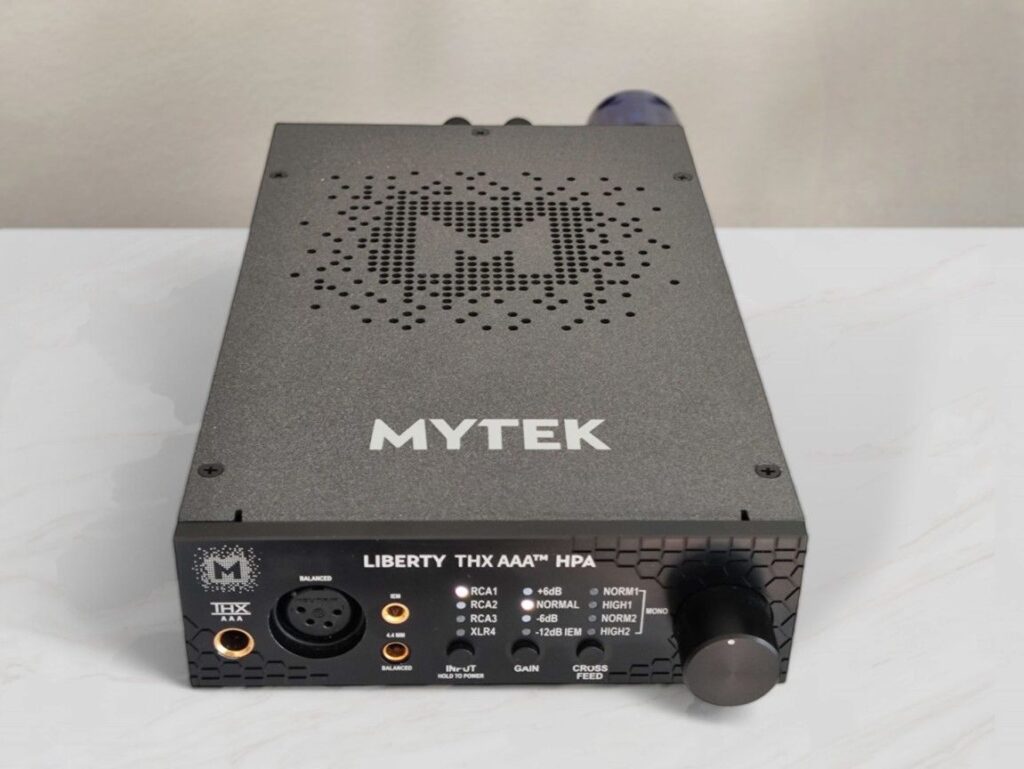
Image Copyright: The Headphoneer
CONCLUSION
The Mytek Liberty THX AAA Amp is a compact and exceptionally clean-sounding headphone amplifier with a wide range of input and output options and a well-implemented crossfeed feature.
The Liberty Amp delivers excellent sound quality across almost all the headphones I’ve tested and truly excels with several high-end models; With the Focal Utopia, Clear MG, Sennheiser HD800S, Hifiman HE1000v2, to mention some, its performance is remarkable.
My only major critique is that the Liberty Amp has a higher noise floor than most of its competitors, making it less suitable for extremely sensitive headphones and most IEMs. I hope Mytek addresses this in future versions.
- Amazon: Mytek Liberty
Any purchase you make on Amazon or Linsoul with any of our affiliate links will give us a small provision at no cost to you.
We only get a provision for items that are not returned, so there’s no incentive for us to recommend something that’s not good.
Linsoul : Headphones, Earbuds, Wireless Earbuds, Desktop DAC/AMP, Portable DAC/AMP, Digital Audio Players,
Amazon: Headphones, IEMs, Headphone Amplifiers, Home Audio or Anything else.
.
If you enjoyed this article or other content on The Headphoneer, you might consider leaving a small donation to keep this website up and running. No donation is too small. Thanks for supporting us!
If you like our work please follow us on Instagram, Facebook and Twitter , it will help us grow. Sharing is caring 🙂


